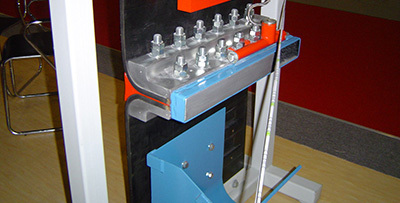Technical Services
Hezi technology focuses on the research and development of "rapid seamless conveyor belt joint sleeve" innovative technology project

TECHNICAL SERVICE
Technical Services

Detailed introduction
Classification of heat resistant conveyor belts
Release time:
2019-08-07
The heat-resistant conveyor belt is divided into ordinary heat-resistant conveyor belt and strong heat-resistant conveyor belt. The common tropical resistant strong layer is polyester cotton canvas (cc56), and the strong tropical resistant strong layer is EP (specifically divided into EP100, EP150, ep200, ep250, ep300, ep350, ep400, etc.).
The heat-resistant conveyor belt is divided into ordinary heat-resistant conveyor belt and strong heat-resistant conveyor belt. The common tropical resistant strong layer is polyester cotton canvas (cc56), and the strong tropical resistant strong layer is EP (specifically divided into EP100, EP150, ep200, ep250, ep300, ep350, ep400, etc.).
It is mainly used in metallurgy, construction and other industries to transport sinter, coke, cement clinker and other high-temperature materials. The material temperature does not exceed 800 ℃ and the belt surface temperature does not exceed 220 ℃. Characteristics: EPDM is used as the covering layer, the framework material is made of domestic high temperature resistant canvas. The unique formula design solves the key problems of high saturation, poor adhesion and low adhesion between layers. It has the advantages of light weight, long service life (about 2-4 times) and good heat resistance
According to the national standard, it is divided into the following four heat resistance grades:
Type I: it can withstand the test temperature no more than 100 ℃, the maximum short-term operating temperature is 150 ℃, code T1.
Type II: it can withstand the test temperature not higher than 125 ℃, the maximum short-term operating temperature is 170 ℃, code name T2.
Type III: resistant to test temperature no more than 150 ℃, maximum short-term operation temperature 200 ℃, code T3.
Type IV: resistant to test temperature no more than 175 ℃, maximum short-term operating temperature 250 ℃, code T4
Original author: Hangzhou Heli rubber products Co., Ltd
Previous Page
Previous Page





























